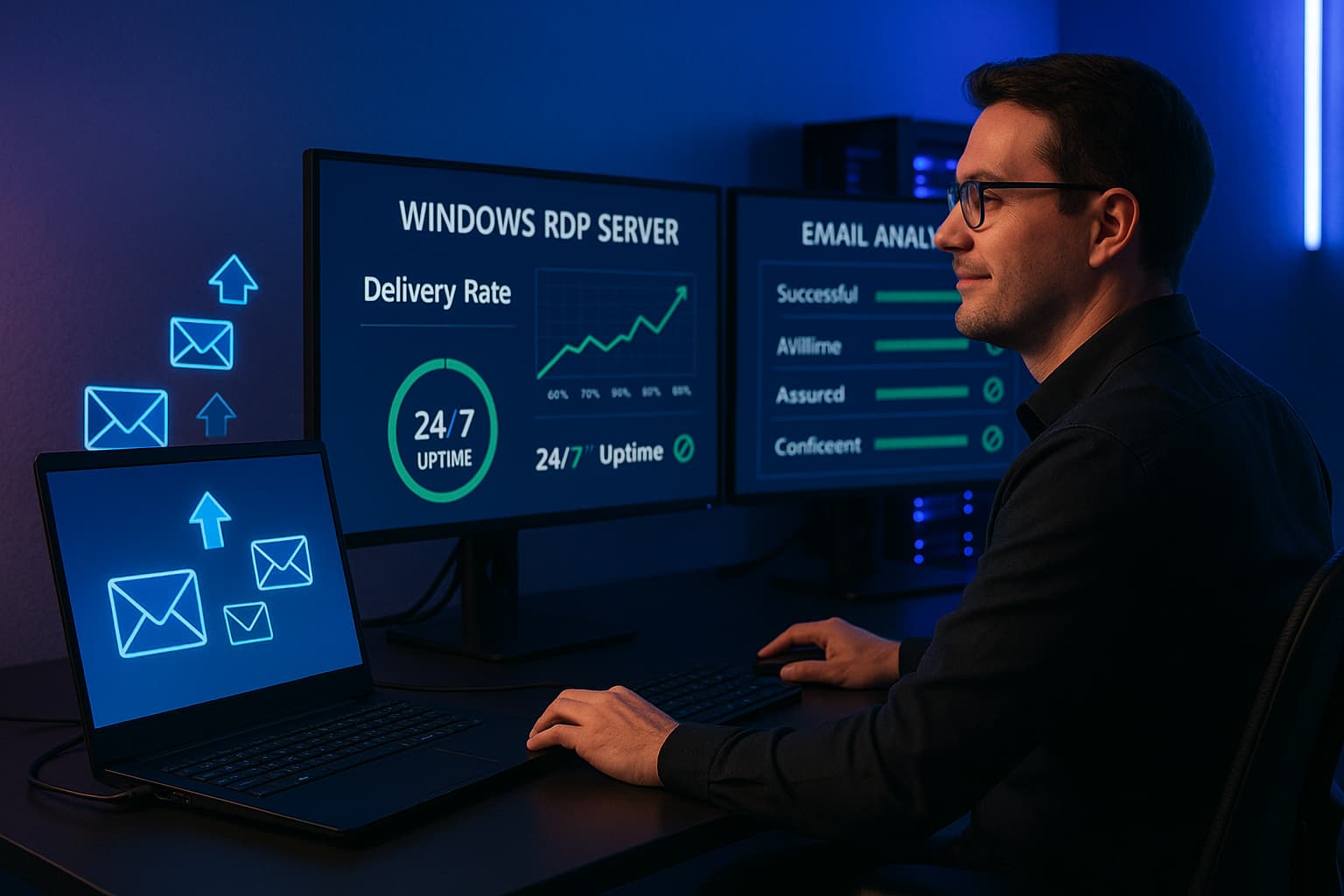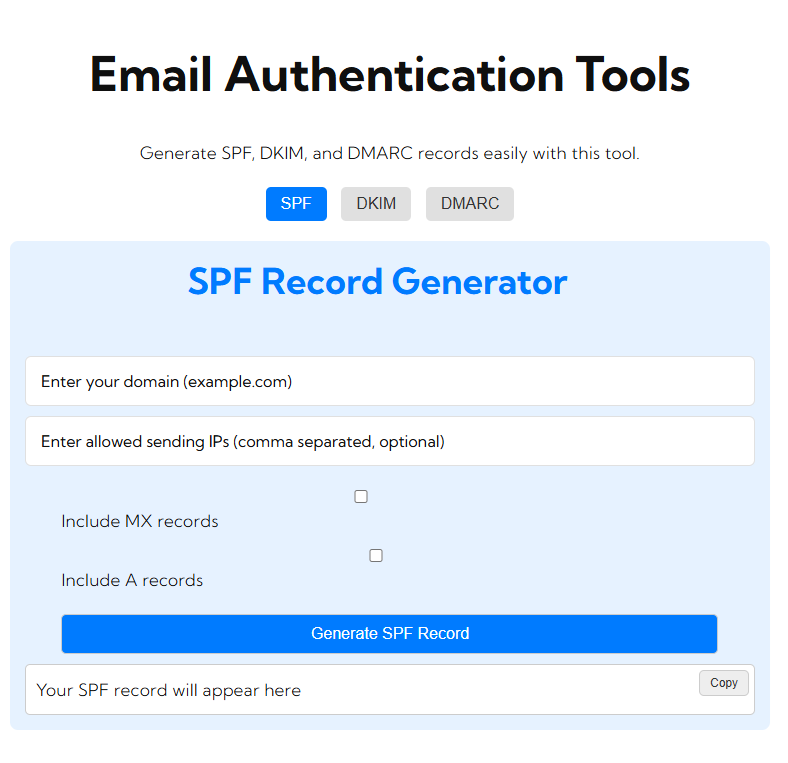For any business or even an individual to reliably send emails from devices, applications, or even third-party services, it is necessary to set up an SMTP email relay service. This ensures that your mails get routed via an outside server, and these SMTP relay services are meant for delivery reliability as well as filtering out spam while handling a large quantity of emails.
This tutorial will explain what an SMTP email relay service is, why you may need it perhaps, and guide you through the process of how to set up your SMTP relay for your emails.
What is an SMTP Relay Service?
Therefore, an SMTP relay service happens to be a server that brings email messages from your server or application to the recipients. In this process, the server takes over the responsibility of the local server regarding the management of email delivery – thus providing that your messages reach the destination correctly even in the case of remote domains.
Benefits of SMTP Relay Service
- Ensures that your emails will land in the recipient’s inbox and not the spam folder.
- More Sending Capabilities: It avoids the limitations given by the ISPs or local email servers.
- Authentication and Security: This brings safety apart from reaching their mailbox, avoiding spam and phishing.
- Monitoring and Analytics: It provides you with the understanding of how your email is doing, bounce rate, and delivery status.
How to Build an SMTP Relay Service Setup
Here are the ways of creating an SMTP relay, whatever service provider you will opt for.
Step 1: Choose an SMTP Relay Service Provider
Choose an SMTP relay based on your needs and budget. Here are a few most popular ones:
- SendGrid: Free with scalable plans and good analytics.
- Mailgun: Perfect for developers with flexible APIs and pricing.
- Sendinblue: Ideal for automation features of transactional and marketing emails.
- Amazon SES (Simple Email Service): Good for the bulk email sending with the best cost efficiency.
Of course, each service has its unique features and pricing plans. Most of them offer a free plan or trial which is suitable for small-scale needs with respect to email.
How to Sign up to Your Account with the SMTP Relay Provider
Step 2
- Sign up: Create an account on the SMTP relay service that you prefer.
- Verify Email Domain: The majority of providers will require you to confirm your domain or e-mail address indicating that you are authorized to send.
- Get SMTP Credentials: After you have verified your domain, you would receive your SMTP credentials. Most times, such credentials include:
- SMTP server address
- Port number
- Username and password for authentication
- Security protocols (TLS or SSL)
Step 3: Configure Your SMTP Server Settings
Configuring your email server or application to use the SMTP relay service. Here are just some of the general settings that you will need to input:
- SMTP Server: That provided by your relay service (smtp.sendgrid.net, smtp.mailgun.org etc.)
- Port: The most common ones are 587 (TLS) and 465 (SSL)
- Username: the SMTP service given to you as your username or API key
- Password: the password or secret assigned to your SMTP account
- Encryption: Use TLS or SSL for encryption in the transport of emails.
For instance, this is how a SendGrid configuration might look like:
- SMTP Server: smtp.sendgrid.net
- Port: 587
- Username: apikey
- Password: your-actual-api-key
- Encryption: TLS
Test the SMTP Relay Setup
Step 4
To test whether you have set up your SMTP relay correctly, try sending a test email. This can be done through your mail client or directly on a command line using sendmail or even a telnet app. Additionally, many services have their own test tools.

Step 5: Watch and Tune Email Sending
- Verify Deliverability: Confirm whether your test email has reached the inbox of the recipient rather than the spam folder.
- Track Bounce Rates: Check your bounce rates, open rates, and all analytics through the relay service dashboard.
- Optimize SPF and DKIM: Configure SPF and DKIM in your account correctly for better email authentication. Avoid spoofing using them.
Securing SMTP Relay
Security is the fundamental thing when you are using the SMTP relay service so that no unauthorized user would send a spam through your account. Here are some best practices:
- Authentication is automatically enabled (username and password are required to access your SMTP server).
- IP Whitelisting: If your provider allows, restrict access of your SMTP relay only from some given IP addresses.
- Enable SPF, DKIM, and DMARC: Setup these records to help authenticate your email messages and protect your domains reputation.
- Use SSL/TLS Encryption: Use encryption on the SMTP relay connections to secure the data exchange.
FAQs
Q1: What is the difference between SMTP relay and SMTP client submission?
- SMTP Relay: It is mainly used for sending high quantities of emails through a trusted server.
- SMTP Client Submission: It is designed for smaller volumes and requires authentication for each email.
Q2: How can I avoid my emails being rated as spam?
- Add proper SPF and DKIM records for email authentication.
- Use your professional email address and domain.
- However, don’t send spammy words and promotional content using your emails.
Q3: Can I use a free SMTP service to send bulk emailing?
- The free plans have very limited quotas of daily or monthly amounts of emails. If you still need to make use of this service, the better alternative is to upgrade to a paid plan or at least a dedicated email marketing service.
Conclusion
An SMTP email relay service allows you to manage your sending of emails in a more powerful and effective way with improved deliverability and security. Whether you are a small business, a developer, or a large enterprise, you will be able to find the right SMTP relay for your needs that will streamline communications and ensure that messages are delivered properly.







